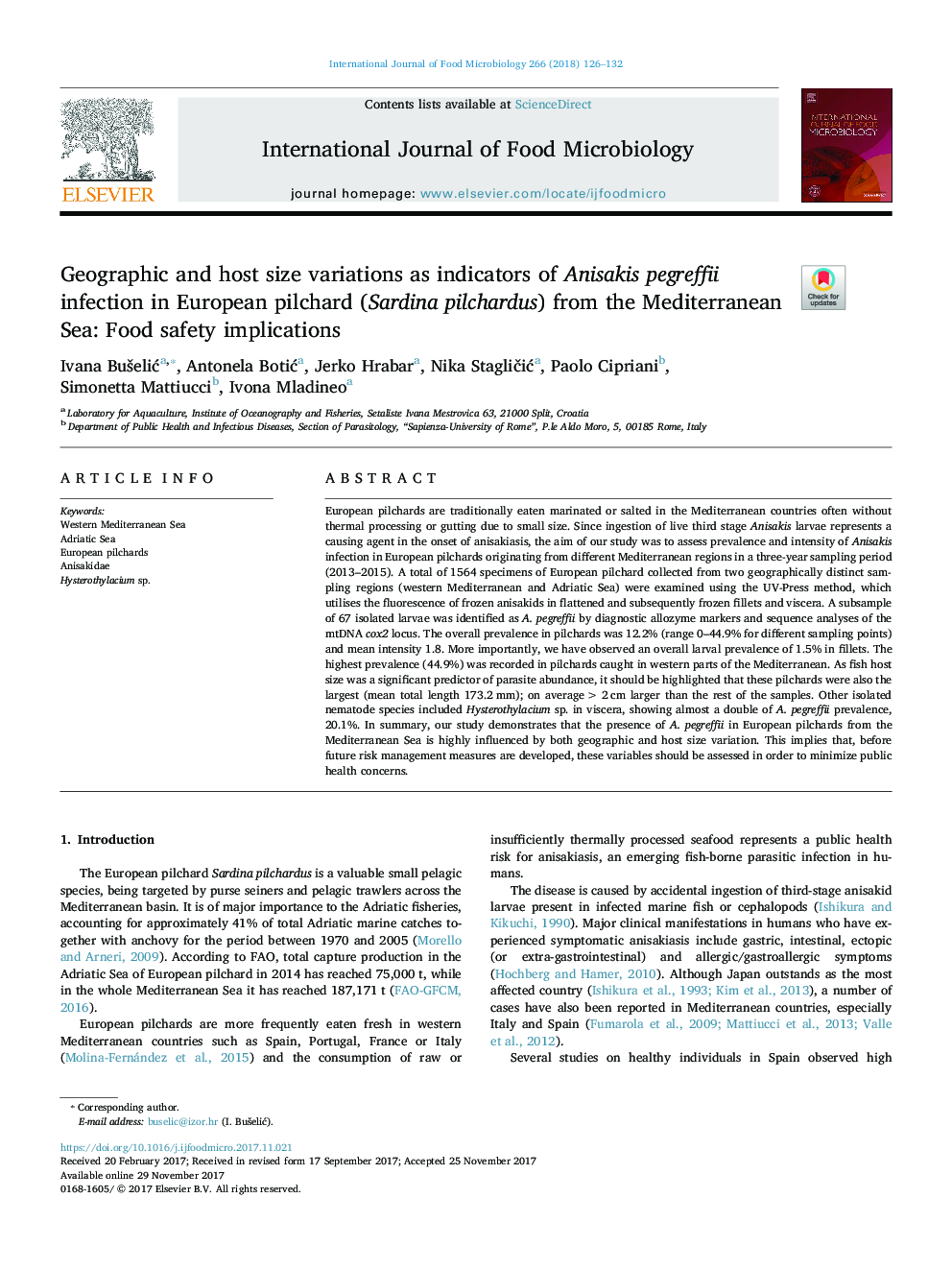| کد مقاله | کد نشریه | سال انتشار | مقاله انگلیسی | نسخه تمام متن |
|---|---|---|---|---|
| 8844317 | 1616517 | 2018 | 7 صفحه PDF | دانلود رایگان |
عنوان انگلیسی مقاله ISI
Geographic and host size variations as indicators of Anisakis pegreffii infection in European pilchard (Sardina pilchardus) from the Mediterranean Sea: Food safety implications
دانلود مقاله + سفارش ترجمه
دانلود مقاله ISI انگلیسی
رایگان برای ایرانیان
موضوعات مرتبط
علوم زیستی و بیوفناوری
علوم کشاورزی و بیولوژیک
دانش تغذیه
پیش نمایش صفحه اول مقاله

چکیده انگلیسی
European pilchards are traditionally eaten marinated or salted in the Mediterranean countries often without thermal processing or gutting due to small size. Since ingestion of live third stage Anisakis larvae represents a causing agent in the onset of anisakiasis, the aim of our study was to assess prevalence and intensity of Anisakis infection in European pilchards originating from different Mediterranean regions in a three-year sampling period (2013-2015). A total of 1564 specimens of European pilchard collected from two geographically distinct sampling regions (western Mediterranean and Adriatic Sea) were examined using the UV-Press method, which utilises the fluorescence of frozen anisakids in flattened and subsequently frozen fillets and viscera. A subsample of 67 isolated larvae was identified as A. pegreffii by diagnostic allozyme markers and sequence analyses of the mtDNA cox2 locus. The overall prevalence in pilchards was 12.2% (range 0-44.9% for different sampling points) and mean intensity 1.8. More importantly, we have observed an overall larval prevalence of 1.5% in fillets. The highest prevalence (44.9%) was recorded in pilchards caught in western parts of the Mediterranean. As fish host size was a significant predictor of parasite abundance, it should be highlighted that these pilchards were also the largest (mean total length 173.2Â mm); on average >Â 2Â cm larger than the rest of the samples. Other isolated nematode species included Hysterothylacium sp. in viscera, showing almost a double of A. pegreffii prevalence, 20.1%. In summary, our study demonstrates that the presence of A. pegreffii in European pilchards from the Mediterranean Sea is highly influenced by both geographic and host size variation. This implies that, before future risk management measures are developed, these variables should be assessed in order to minimize public health concerns.
ناشر
Database: Elsevier - ScienceDirect (ساینس دایرکت)
Journal: International Journal of Food Microbiology - Volume 266, 2 February 2018, Pages 126-132
Journal: International Journal of Food Microbiology - Volume 266, 2 February 2018, Pages 126-132
نویسندگان
Ivana BuÅ¡eliÄ, Antonela BotiÄ, Jerko Hrabar, Nika StagliÄiÄ, Paolo Cipriani, Simonetta Mattiucci, Ivona Mladineo,